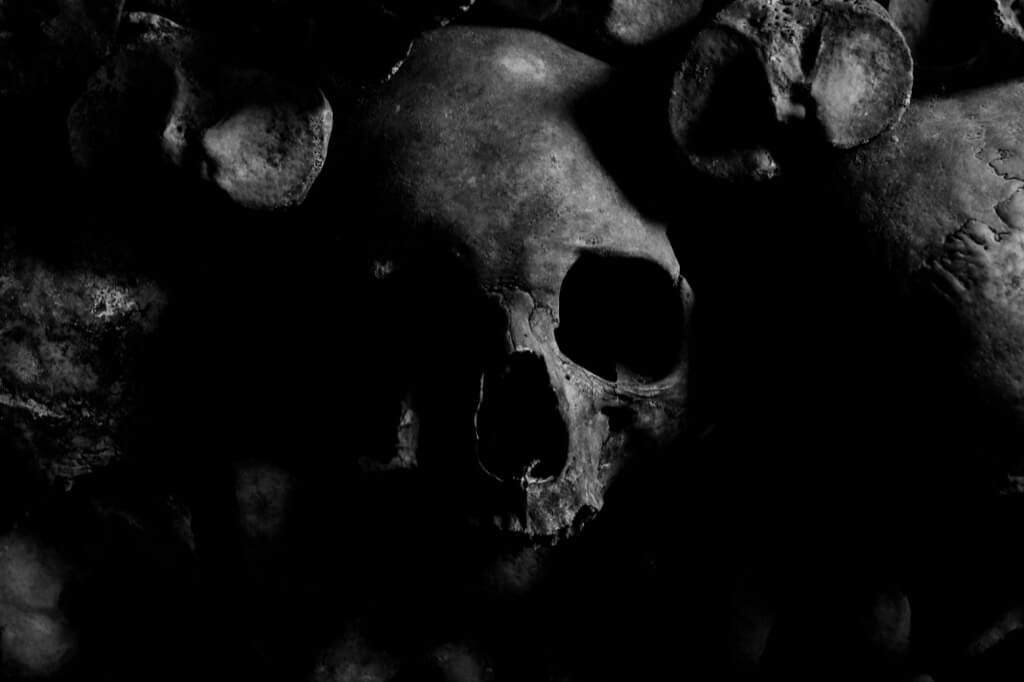In the realm of unusual and horrifying tales, the Ciudad Juárez nuclear catastrophe stands as a chilling testament to the unexpected perils of mishandling radioactive materials. This haunting incident took place in a Mexican city that was once dubbed “the most dangerous in the world,” and it unfolds as a cautionary tale about how a seemingly ordinary event can lead to a catastrophic nuclear crisis. Join us on a journey into the heart of this chilling story, as we unravel the events that took place on that fateful day in Ciudad Juárez.
Our story commences on December 6, 1983, in Ciudad Juárez, Mexico, where two individuals, Vicente Sotelo Alardin and Ricardo Hernandez, found themselves in the midst of a peculiar heist. Employed as maintenance workers at the Specialties Medical Center, their mission was to pilfer equipment from a warehouse and sell it for scrap. Little did they know that their actions that day would set off a chain of events leading to a nuclear catastrophe.
The unsuspecting duo stumbled upon a Picker 3000, a radiation machine used for cancer treatment, while collecting items for their heist. Intrigued by the device, they decided to dismantle it, oblivious to the perilous nature of their actions. To their astonishment, they uncovered approximately 6,000 cobalt-60 particles concealed within the machine. Cobalt-60, a highly radioactive isotope, is notorious for emitting deadly gamma rays and beta particles during decay.
Unleashing Radioactive Peril
The consequences of Vicente and Ricardo’s actions began to unravel rapidly as they loaded their loot, including the radioactive cobalt-60, into Vicente’s pickup truck. Little did they realize that they were transporting a ticking time bomb. As they embarked on their journey, radioactive pellets started raining down from the truck, posing a significant health risk to anyone in proximity. The half-life of cobalt-60, approximately 5.27 years, meant that these emissions would linger for years to come.
With their unwitting cargo in tow, the duo sold their acquired items at a local junkyard named Yonke Fenix for a meager $8.50 USD, equivalent to roughly $26 in today’s currency. Unbeknownst to them, the fate of Ciudad Juárez hung in the balance as the radioactive material silently contaminated their surroundings.
After their ill-fated escapade, Vicente’s pickup truck broke down by the Rio Grande River, stranding the radioactive cargo for two days. Vicente managed to repair the vehicle but was soon confronted with another setback: the theft of the truck’s battery. Unable to move the truck, he left it parked outside his house, unknowingly allowing a nuclear time bomb to sit in a densely populated area for weeks.
According to the National Nuclear Safety and Safeguards Commission (CNSNS), the pickup remained unnoticed until after January 26, 1984. This means that highly radioactive materials had been silently radiating their deadly energy in the heart of the city for seven long weeks, unbeknownst to its residents.
The Silent Spread
The situation took a dire turn when the radioactive material made its way to the junkyard, where it was handled using electromagnetic cranes and various machinery. Unaware of the lethal danger lurking within, the workers unwittingly contributed to the spread of radiation, setting off an invisible epidemic.
The junkyard, in collaboration with smelting factories, recycled some of the contaminated metal to produce rebar used in construction projects and various applications. The consequences were far-reaching, as an estimated 6,000 to 20,000 tons of radioactive metal were distributed worldwide through construction and manufacturing.
The Unlikely Saviors
The world remained oblivious to the silent nuclear threat lurking in the metal used in construction and other industries until an unexpected turn of events in New Mexico. On January 16, 1984, a truck carrying radioactive steel inadvertently ventured close to the Los Alamos National Security Lab, a site historically linked to the Manhattan Project.
Aware of the potential dangers, the lab had installed radiation sensors just outside its facilities. When these sensors detected elevated radiation levels, they triggered surveillance cameras, capturing images of the moving truck. In a race against time, authorities attempted to contact the driver and used the photos to track down the vehicle, which led them to a motel.
Upon locating the driver, a team clad in protective suits swiftly surrounded him, ready to confront the nuclear threat that had unknowingly crossed state lines.
Future Implications
As we revisit the harrowing tale of the widespread nuclear disaster that inexplicably slipped from public memory, it is crucial to reflect on the potential future impact of this event. While history has a way of repeating itself, awareness and proactive measures can mitigate the consequences of similar disasters in the years to come. In this exploration, we delve into the implications of the forgotten nuclear catastrophe and the lessons it holds for us, the readers.
One of the enduring legacies of the Ciudad Juárez nuclear catastrophe is the environmental impact left in its wake. Despite efforts to contain and address the radioactive contamination, the affected areas continue to grapple with the aftermath. As you consider the future, it’s essential to recognize that radiation does not vanish overnight. The cobalt-60 particles released during the mishandling of radioactive materials remain a persistent threat to the environment.
The implications for you and your community lie in the potential long-term consequences. Radioactive contamination can seep into soil and water sources, affecting ecosystems and posing health risks to residents. It is crucial for future generations to remain vigilant and implement ongoing monitoring and remediation efforts to mitigate the environmental fallout.
While the immediate health impacts of the Ciudad Juárez disaster were evident, the long-term health consequences are often less visible but equally significant. Those exposed to radiation may face a heightened risk of developing radiation-related illnesses, including cancer, over the course of their lives.
For you and your loved ones, this serves as a reminder of the importance of regular health check-ups and screenings. Monitoring your health and understanding potential risks can be instrumental in early detection and treatment, ultimately improving outcomes. The lessons from this forgotten disaster underscore the value of proactive healthcare measures for future generations.
Strengthening Nuclear Safety
The Ciudad Juárez catastrophe, though largely forgotten, carries global implications for nuclear safety and awareness. It highlights the need for international cooperation and stringent safeguards when dealing with radioactive materials. The events that transpired serve as a cautionary tale for nations around the world, reminding them of the catastrophic consequences that can arise from complacency.
In the context of our interconnected world, you and your community play a vital role in advocating for enhanced nuclear safety measures. By staying informed about nuclear policies and advocating for transparency and accountability, you can contribute to a safer global environment. Your actions today can influence policies and practices that safeguard future generations from nuclear disasters.
Perhaps the most valuable lesson from the forgotten nuclear catastrophe is the importance of preparedness and education. As technology advances and new nuclear technologies emerge, it is crucial to equip ourselves and future generations with the knowledge and tools to prevent similar disasters.
For you and your children, this underscores the significance of education in nuclear safety. Promoting science, technology, engineering, and mathematics (STEM) education can empower individuals to understand the complexities of nuclear materials and their potential hazards. By fostering a culture of responsible stewardship, you can contribute to a safer future where the lessons of the past are not forgotten.
The Ciudad Juárez nuclear catastrophe serves as a chilling reminder of the unforeseen consequences that can arise from mishandling radioactive materials. What began as a seemingly ordinary heist ultimately led to a widespread and silent epidemic of radiation exposure, affecting construction projects and industries across the globe.
This cautionary tale underscores the importance of vigilance, education, and responsible handling of radioactive materials to prevent such disasters from occurring in the future. The heroes in this story were the radiation sensors at Los Alamos, which detected the danger and allowed authorities to intervene before it was too late. May this story serve as a reminder of the ever-present need for nuclear safety and awareness in our modern world.
As we delve deeper into the details of this harrowing incident, we’ll explore the scientific aspects of cobalt-60, the health risks associated with radiation exposure, and the long-term consequences of this catastrophe on the affected individuals and the environment. Additionally, we’ll discuss the global implications of this event, shedding light on the importance of international cooperation in the face of nuclear disasters. Join us on this journey to uncover the truth behind the Ciudad Juárez nuclear catastrophe, a story that serves as a stark reminder of the dangers posed by mishandling radioactive materials.






